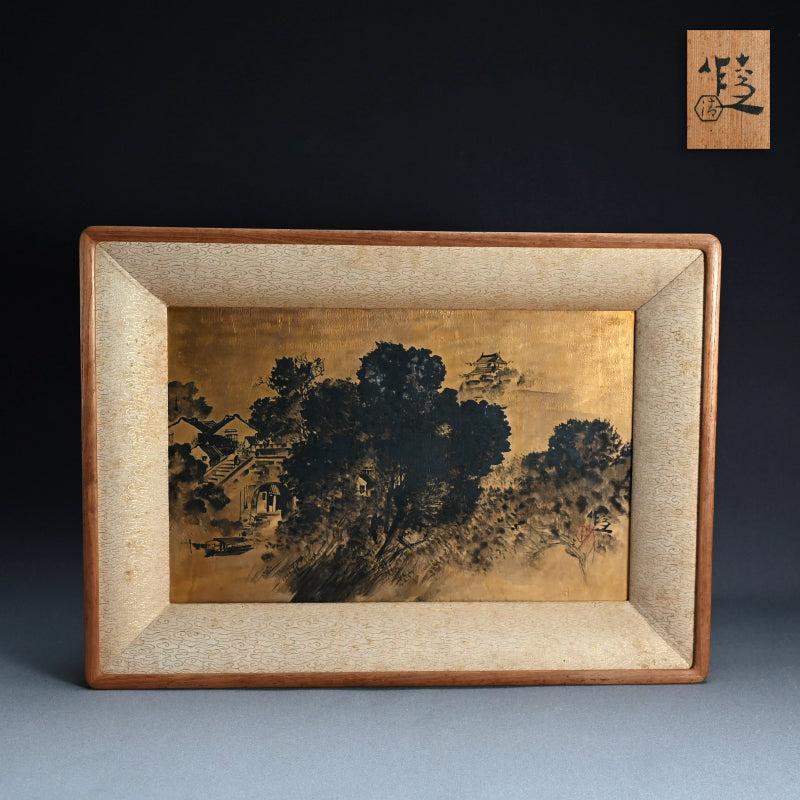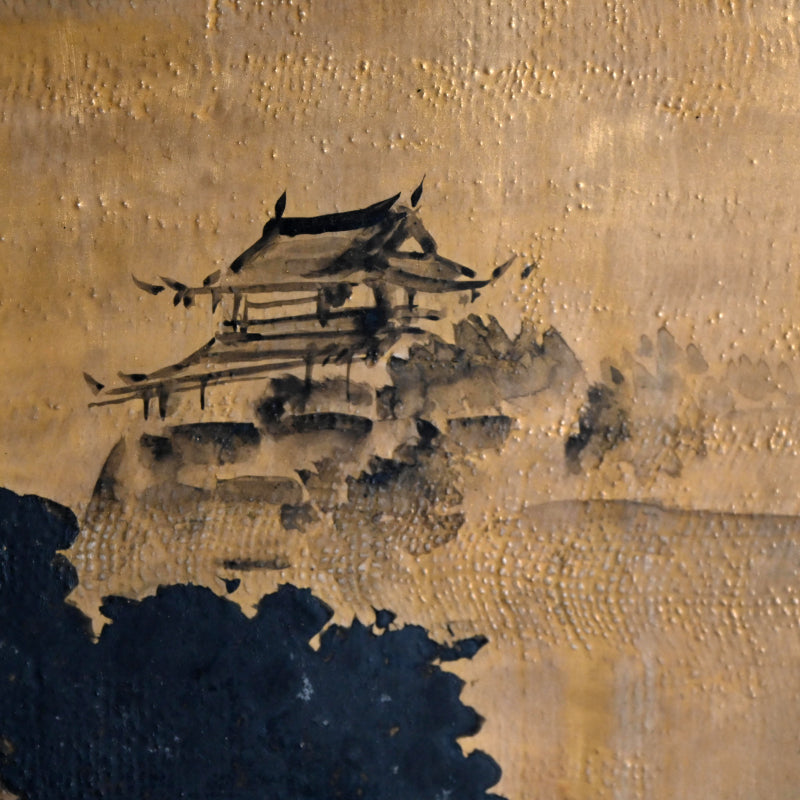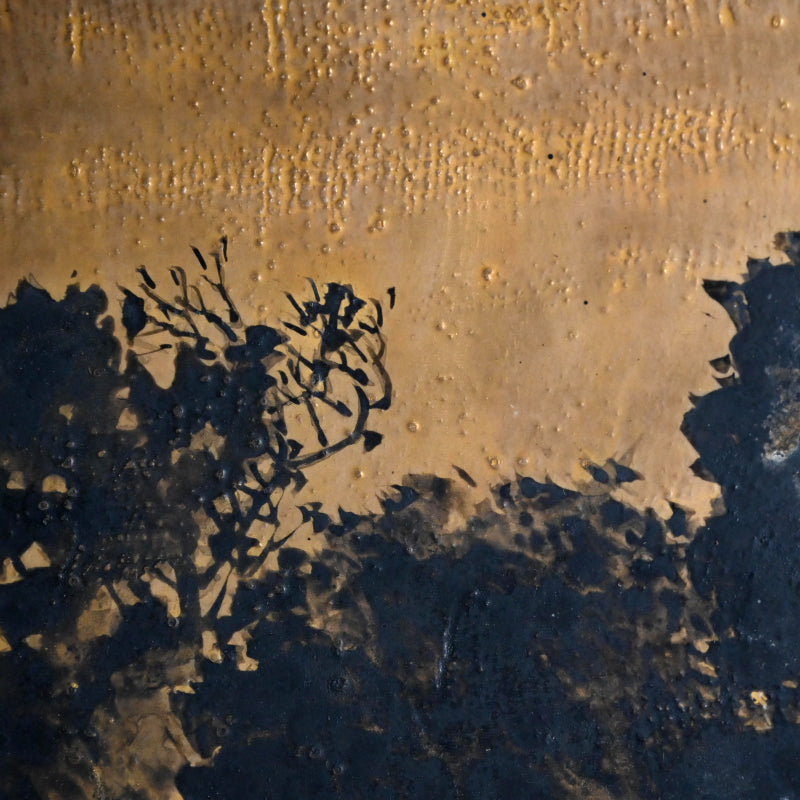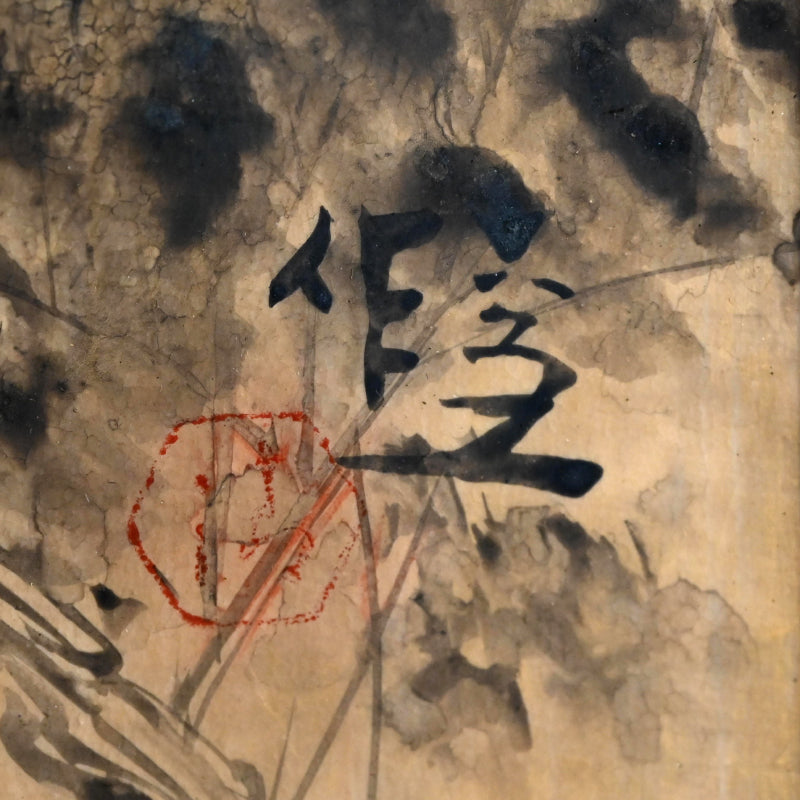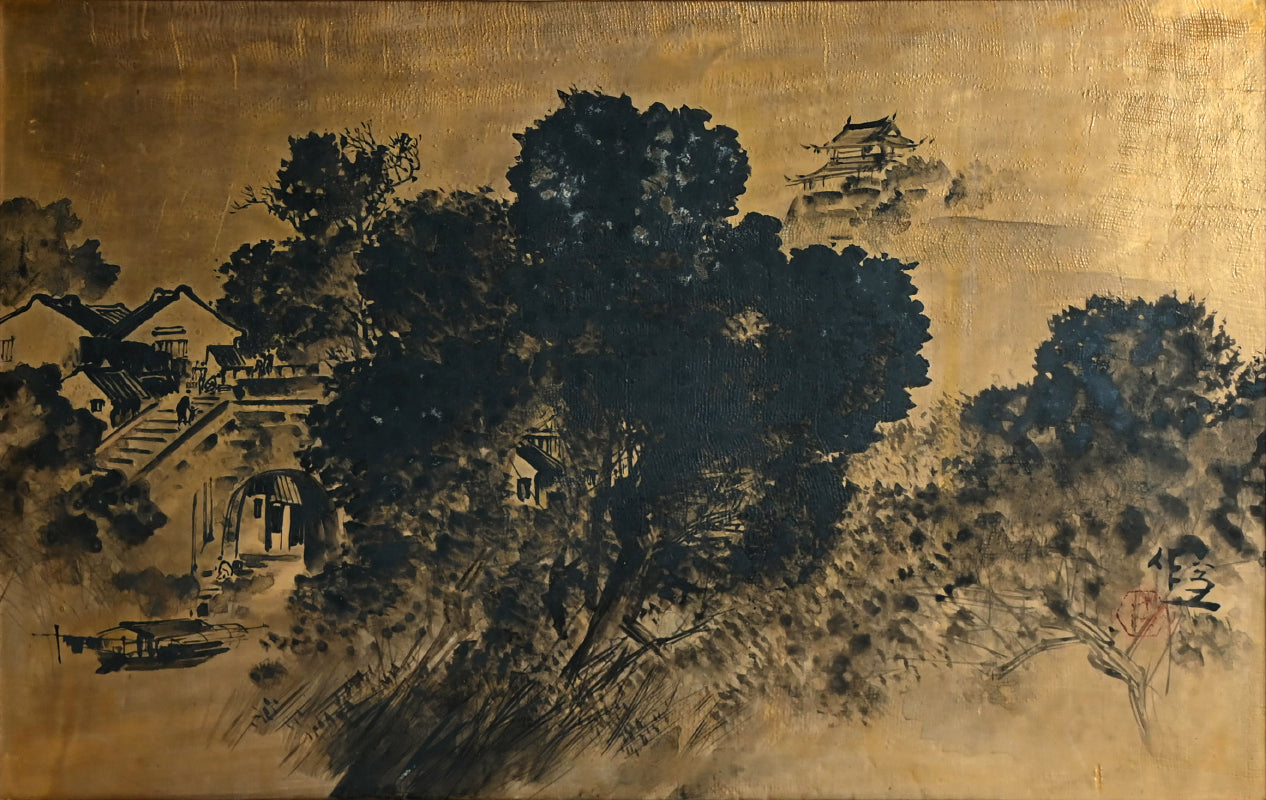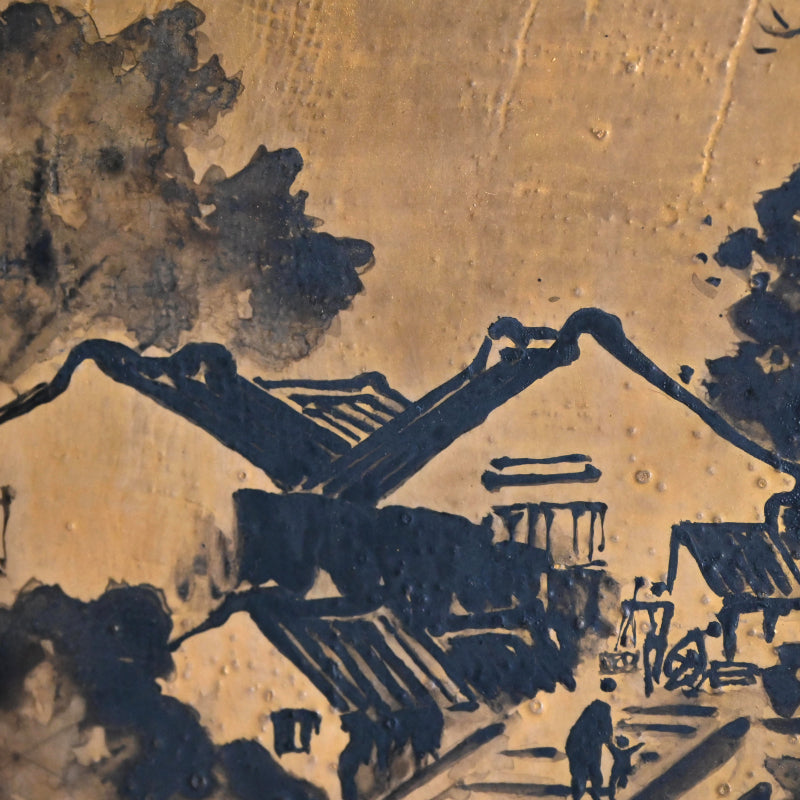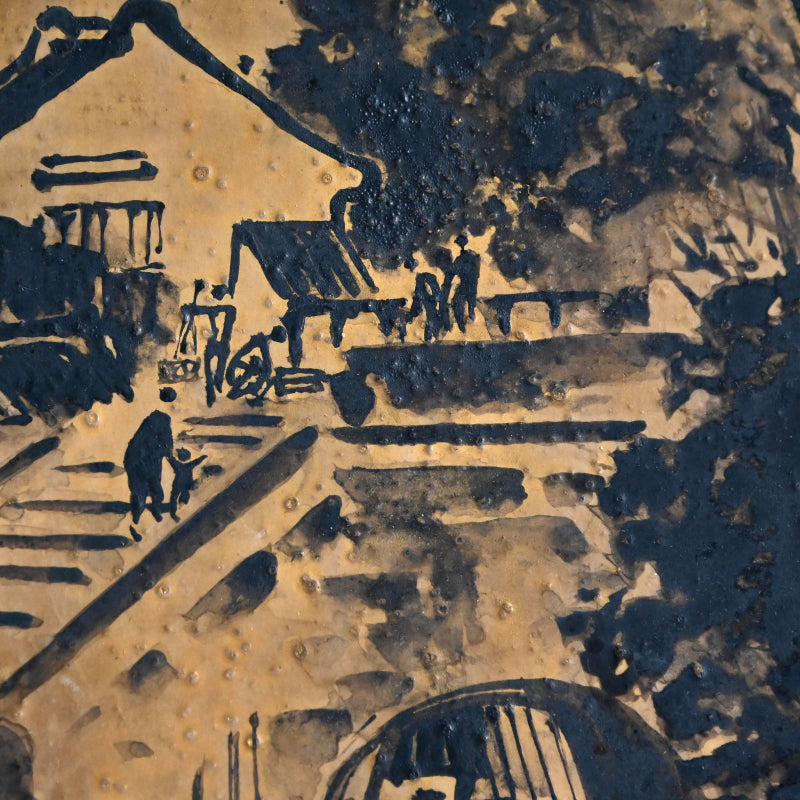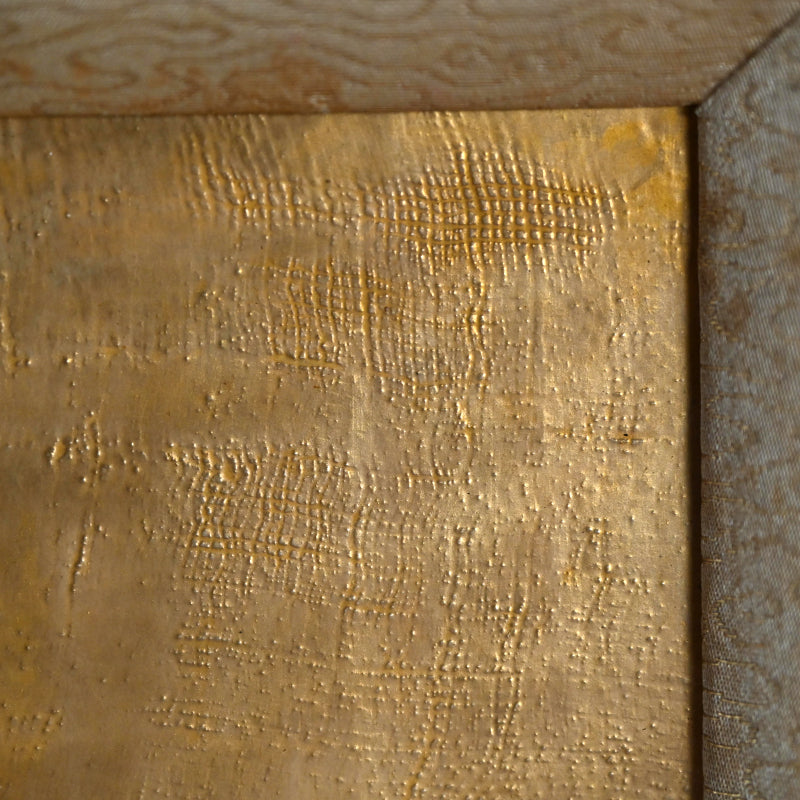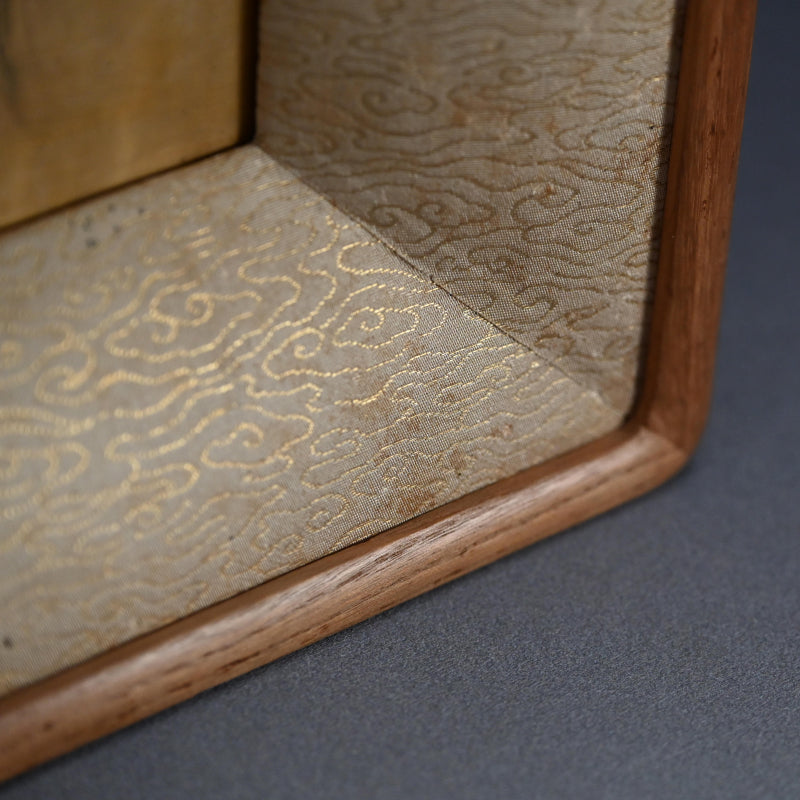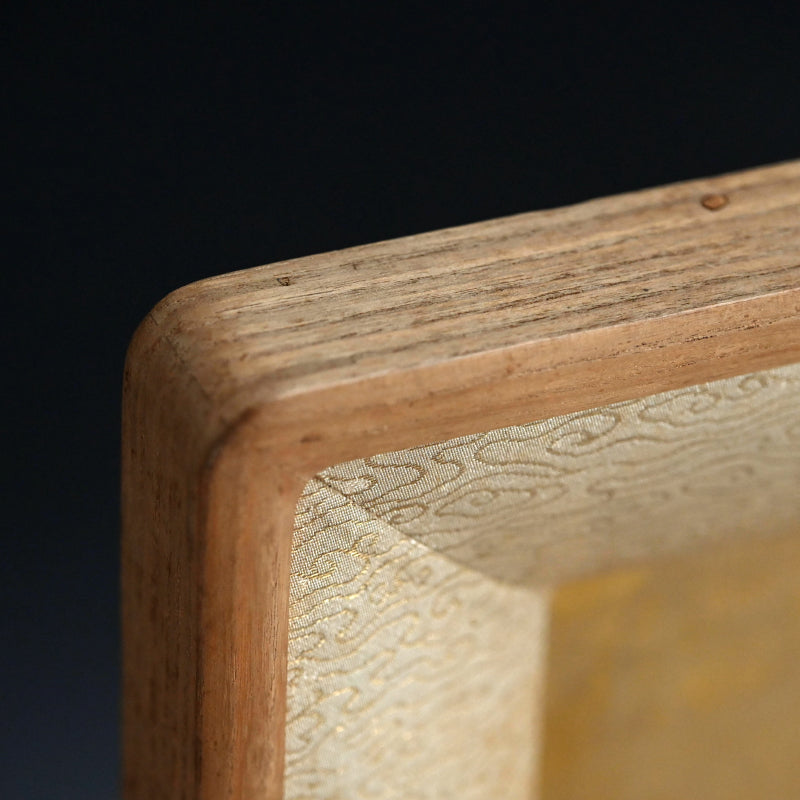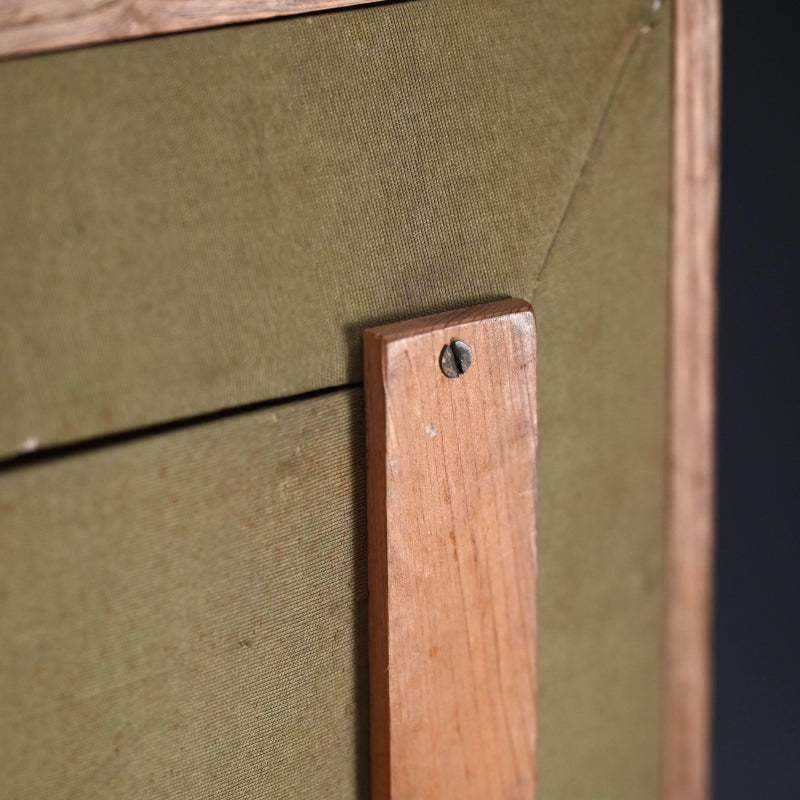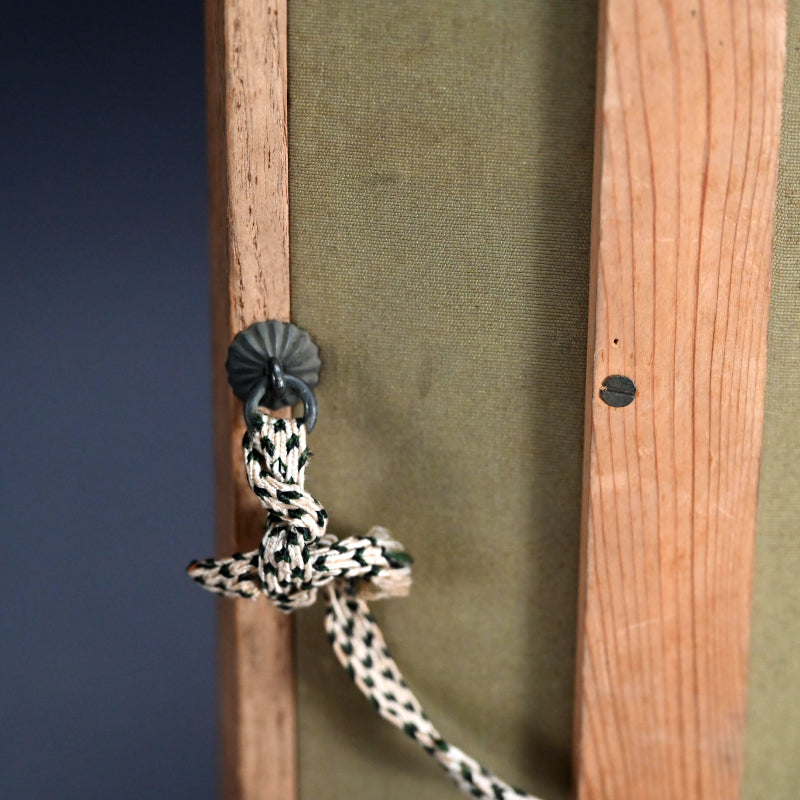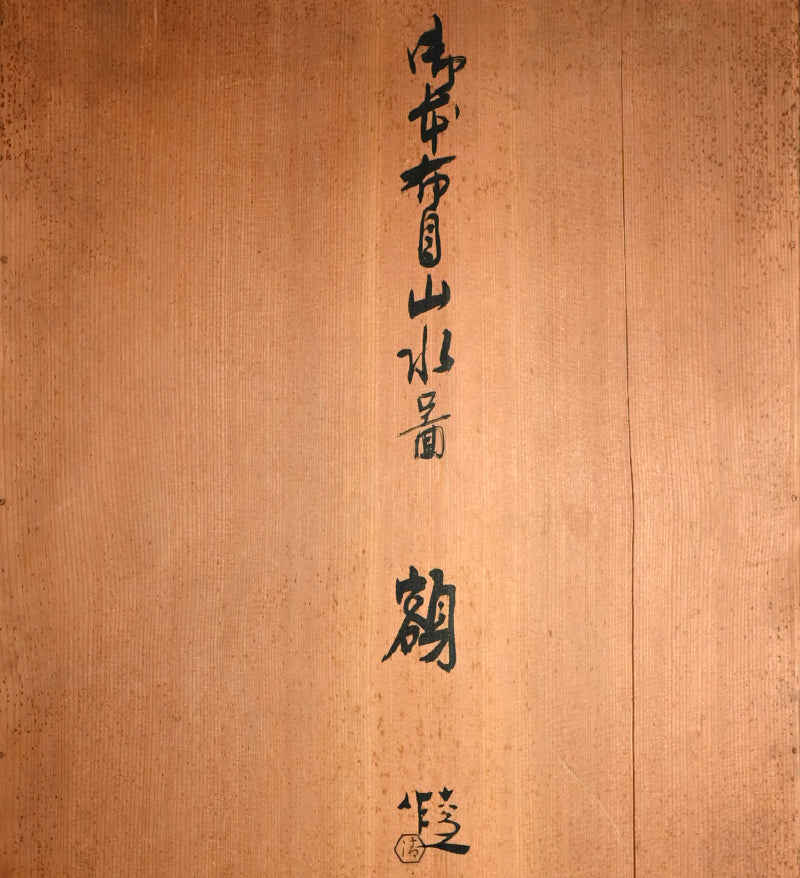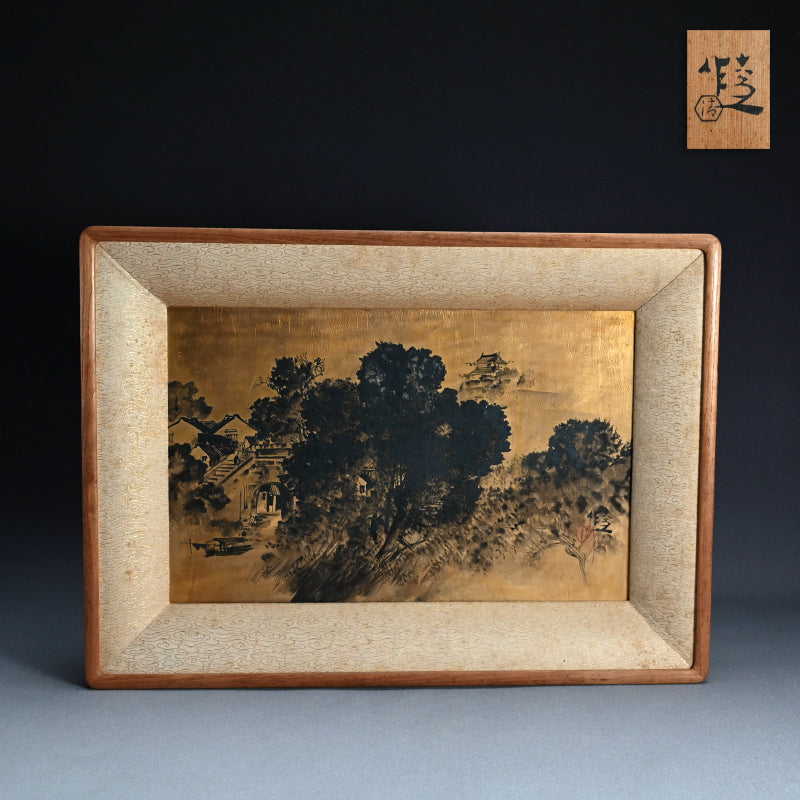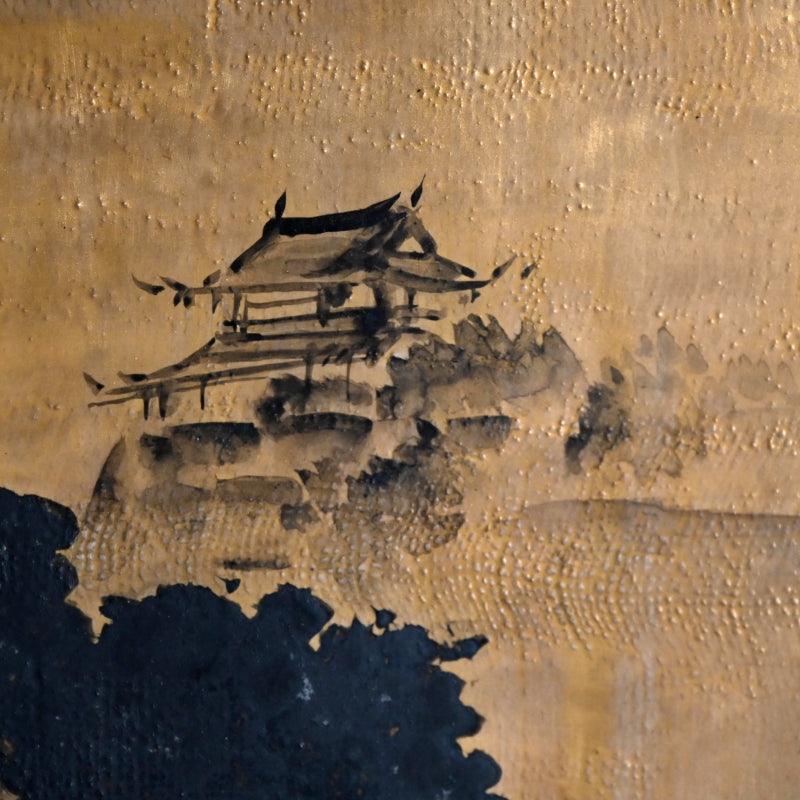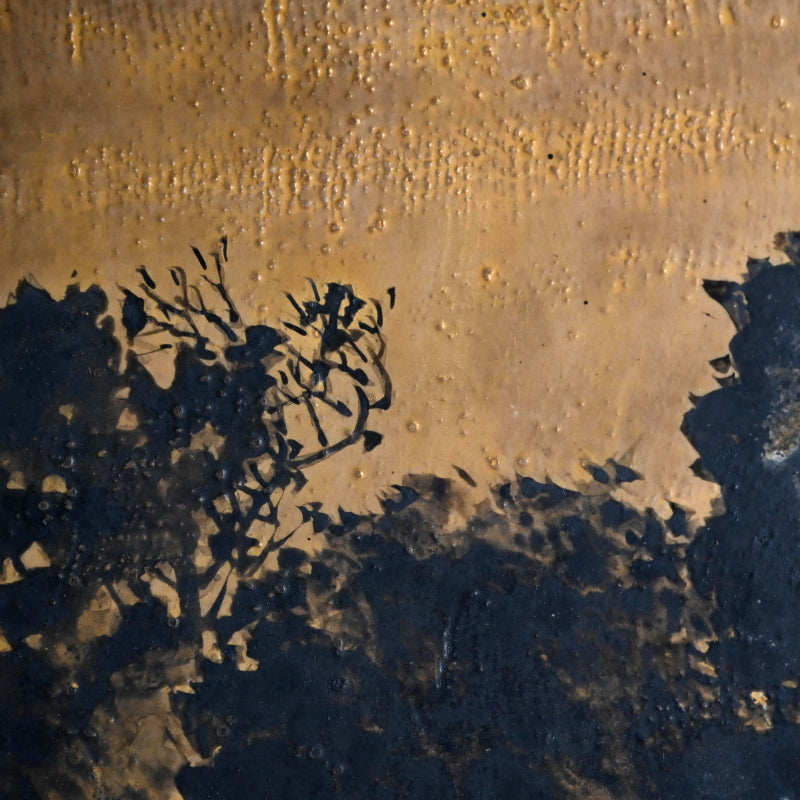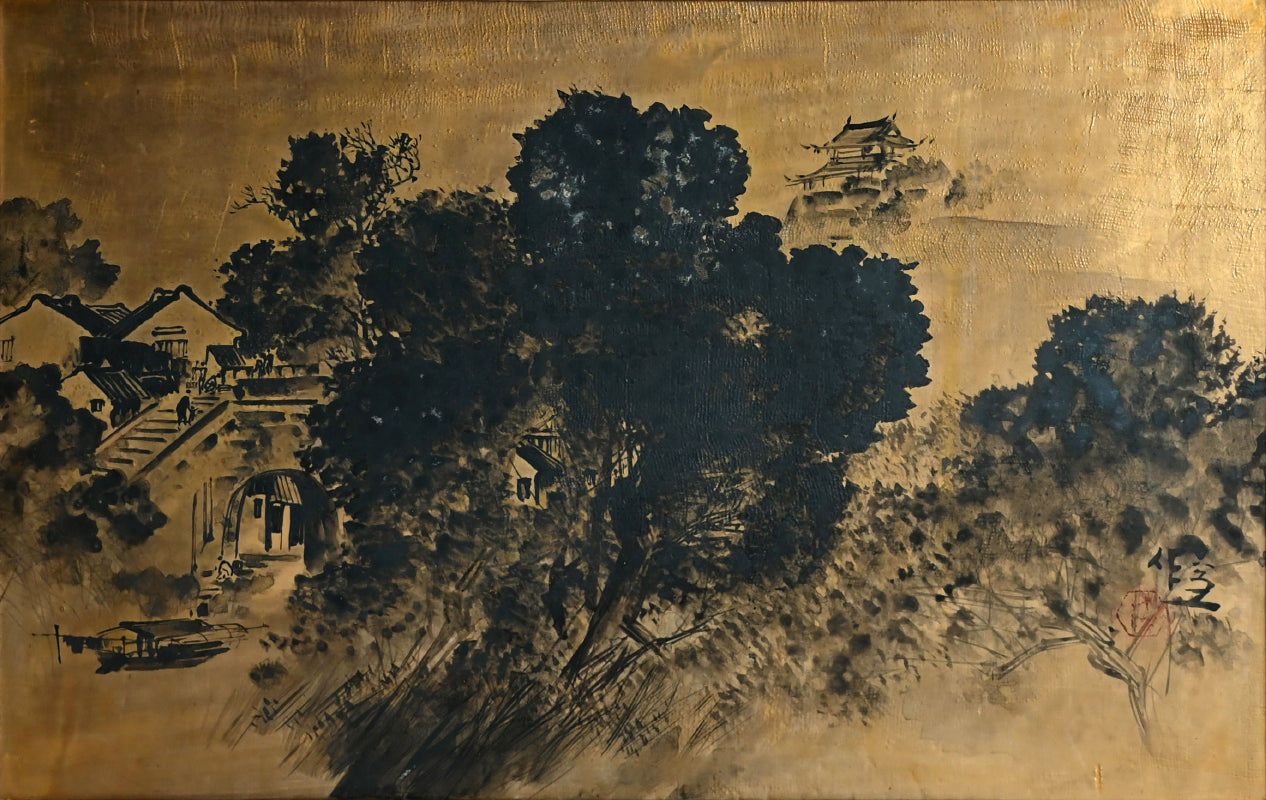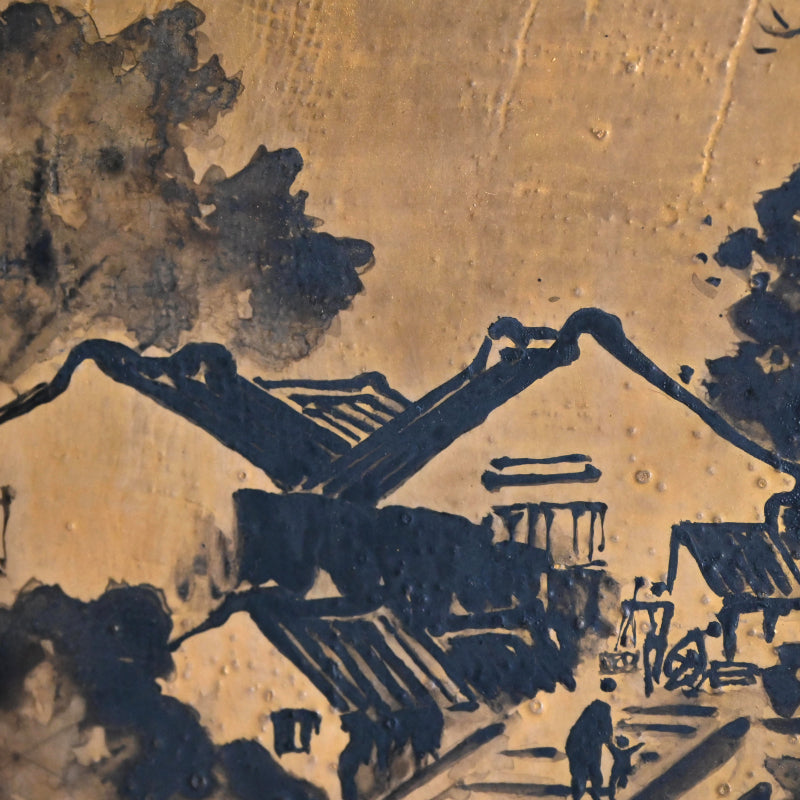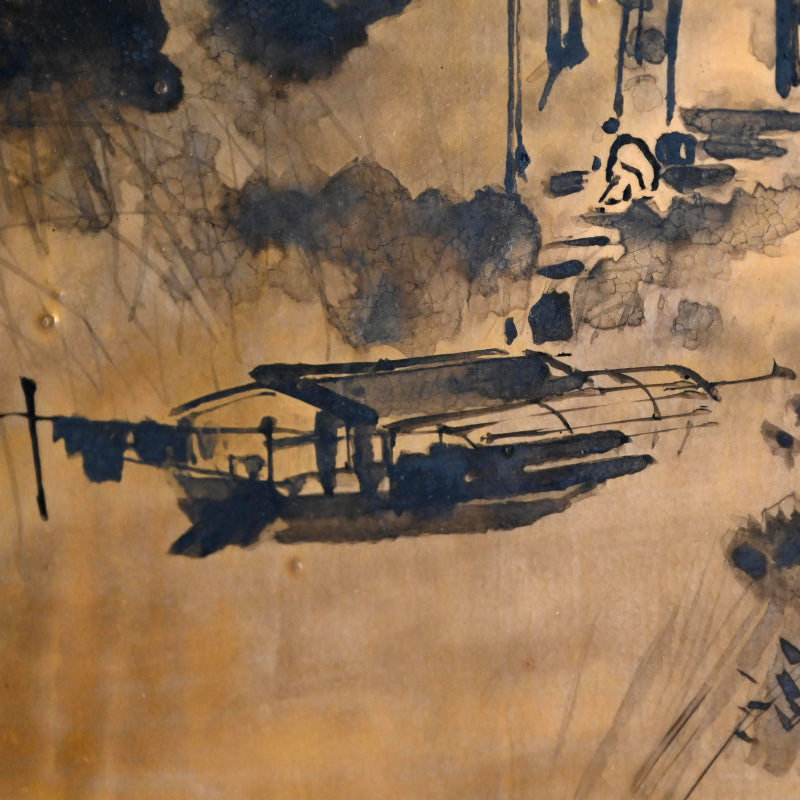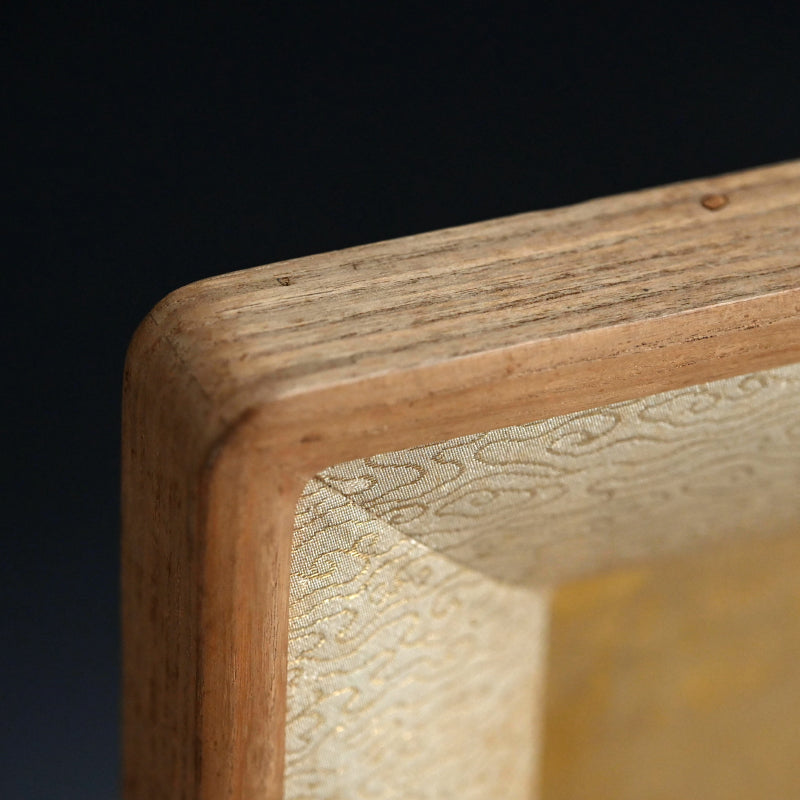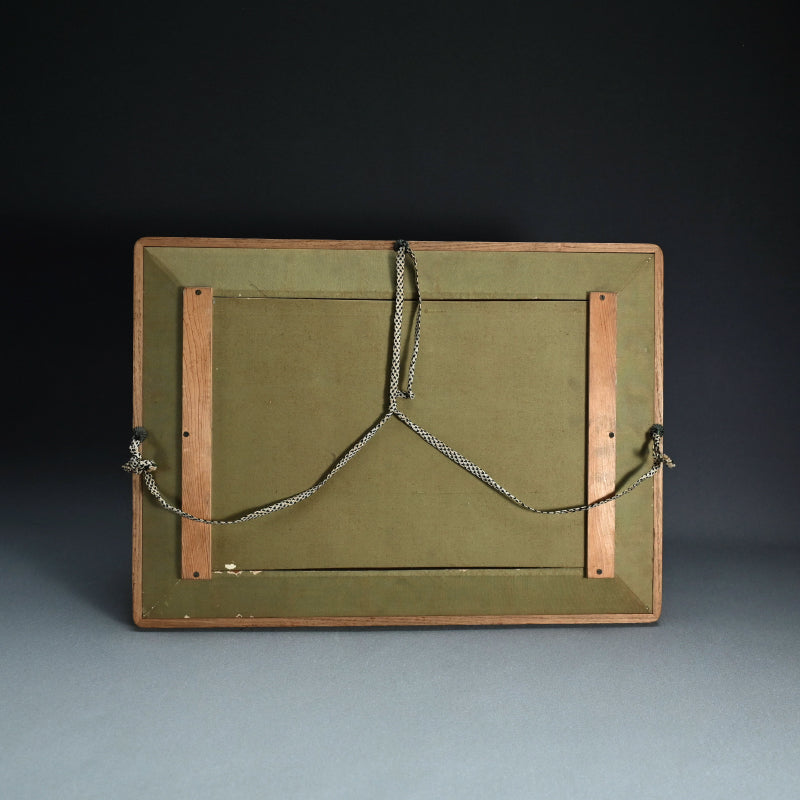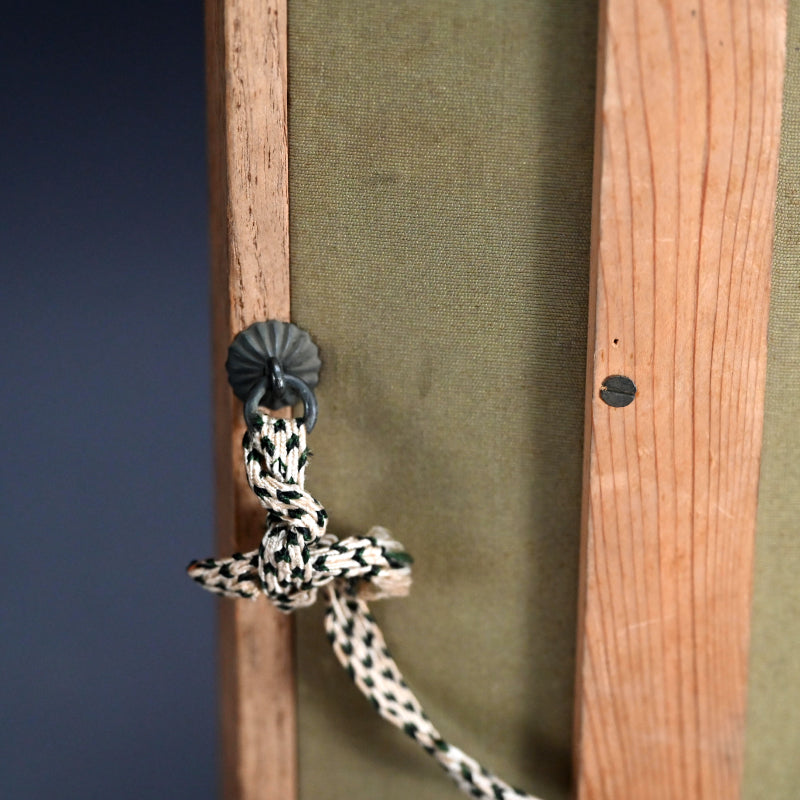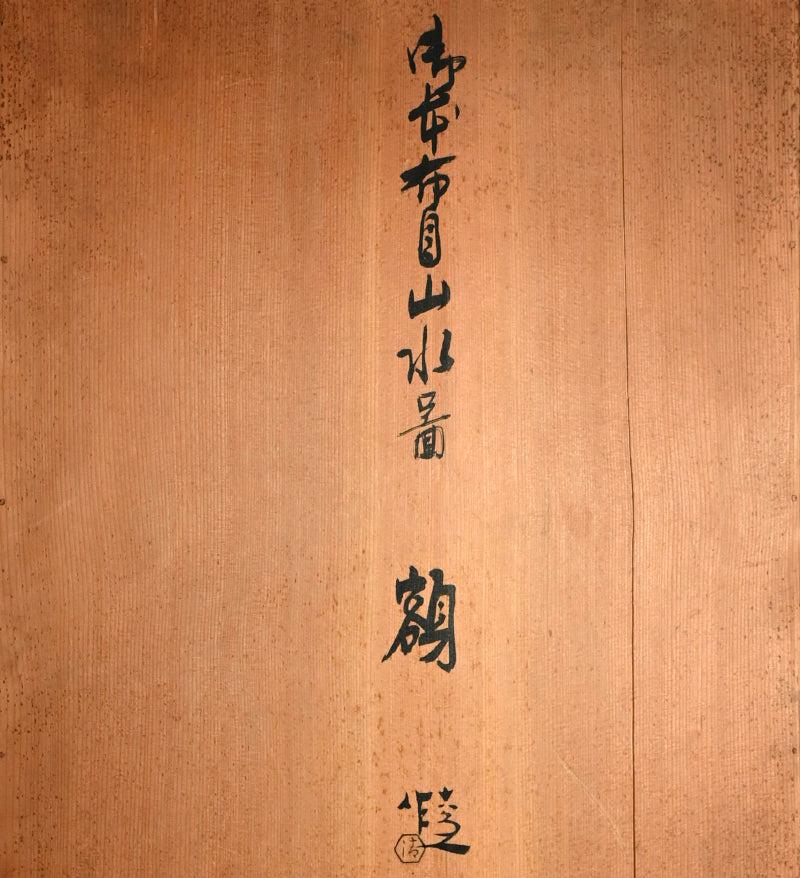Rare! Framed Golden Tile ー五代 清水 六兵衛 "御本布目山水図 額"
Rare! Framed Golden Tile ー五代 清水 六兵衛 "御本布目山水図 額"
Item Code: K944
Couldn't load pickup availability
A very unusual ceramic tile imitating an ink on gold Nihonga image of a Chinese scene by Kiyoizu Rokubei V wrapped in a wooden frame covered in silk patterned with gold clouds and enclosed in the original signed wooden box. The frame is 58 x 42 x 6.5 cm (23 x 17 x 2-1/2 inches) and weighs 4 kg (9 pounds). The tile is roughly 45 x 29 cm (18 x 11-1/2 inches) and is in overall excellent condition. When acquired the box was lined with newspaper from 1929 (included).
Kiyomizu Rokubei V (Shimizu Kuritaro, 1875-1959) initially studied painting and decorating technique under Kono Bairei, one of the foremost painters in Japan in the Meiji era. After graduating the Kyoto Municipal Special School of Painting, he took a position under his father at the family kiln however. That same year he exhibited his first work at the National Industrial Exposition. He was a co-founder of Yutoen with his father and Asai Chu, and worked ceaselessly to promote the pottery of Kyoto. He helped to establish the Kyoto Ceramics Research Facility (Kyoto Tojiki Shikensho) at the turn of the century which would be the proving ground for many young artist of the era. Doctor Maezaki Shinya has noted that Teishitsu-Gigei-in (Imperial Art Academy Member) Seifu Yohei III also fired his acclaimed works in the Rokubei kiln in the Taisho era. Due to his father’s poor health Rokubei V took the reins unofficially in 1902, commanding the helm until assuming the name Rokubei V in 1913. It was in 1928 that Rokubei changed the reading of the family name from Shimizu to Kiyomizu and applied it retroactively to previous generations. He exhibited constantly, and garnered a great many awards. He worked to get crafts added to the National Art Exhibition (Bunten/Teiten) and served as a judge in 1927, the first year crafts were allowed. In 1937 he was designated a member of the Imperial Art Council (Teishitsu Bijutsu Inkai). Despite changes in the world around him Rokubei persevered, working in all manner of materials and styles. He retired in 1945, perhaps as exhausted as Japan was with the end of the war, or perhaps seeing that capitulation would signal a new era in need of new leaders and a new aesthetic. He passed the name Rokubei to his son and took the retirement name Rokuwa. Uncontainable he continued to create pottery under that name until his death in 1959. His influence is so pervasive he was voted one of the most important potters of the modern era by Honoho magazine, the preeminent quarterly devoted to Japanese pottery. A multitude of works by him are held in the The National Museums of Modern Art, both in Tokyo and Kyoto, the Kyoto Kyocera Museum, The Kyoto Hakubutsukan Museum and the Philadelphia Art Museum among others.
Share
